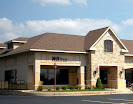Investors and analysts remain very pessimistic over the prospects for the commercial real estate market, expecting significant further declines that some think might derail the prospects for a broad economic recovery.
While we agree that commercial real estate markets will likely be the very last part of the economy to participate in the economic recovery and significant problems remain (particularly on the financing front). It is doubtful that the commercial market will exert much of a drag on the recovery in GDP, jobs, or growth.
Declines in total real estate construction spending have been a major drag on the economy. Over the past twelve months, total construction outlays declined by $109.9 billion to a June, 2009 level of $965.7 billion, so it appears there is still plenty of room for additional declines in the months and quarters ahead.
However, a more careful examination of the underlying data strongly suggests that almost the entire decline is behind us.
Of the $109.9 total decline, $105.3 billion is accounted for by reduced residential investment spending. In the second quarter, real residential investment plunged at a 30% annual rate, even though housing starts have already increased by 2.5% over the first quarter level.
That disparity reflects the lags between a start and actual construction outlays, which play out over several months. If starts continue to rise, as most analysts now expect, residential investment will be either neutral or a contributor to growth in this third quarter and certainly positive by the fourth quarter.
The outlook is presumably far less favorable with regard to commercial real estate, where defaults and foreclosures are still rising, possibly deterring any thought of new construction. Again, a review of the components suggests it is also near bottom. Over the past 12 months, private nonresidential construction spending declined by $4.7 billion to a level of $711.9 billion in June. This decline seems very modest given the turmoil in various commercial markets.
In fact, four categories, lodging, office, commercial, and communication, declined by $50.6 billion, compared to the total decline of $4.7 billion for all nonresidential construction.
Other categories increased spending. For example, spending on power generation rose by $10.7 billion, on private education by $3.5 billion, and numerous other categories were either flat or rose. The four categories that experienced a dramatic decline in spending fell $171.9 billion.
While additional declines are certain, the pace of decline should moderate. This may not relieve the stress in the commercial mortgage market, but it does suggest that the drag on GDP and growth from commercial real estate will be quite limited.
By Charles Leberman
The Ultimate Guide to Buying a Home in Nashville
8 months ago

No comments:
Post a Comment